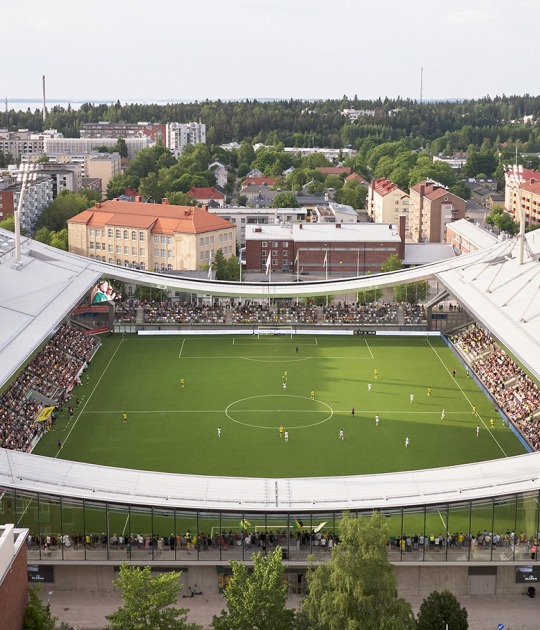Technical details
Site 22@. Poble Nou, Barcelona
Client PUJADES, 51-57 SL.
Type Office building
Project 2006. Competition: First prize.
Construction 2008
Area 7.000 m²
Budget 6M €
The 22@ district in Poble Nou (Barcelona) has been suffering multiple transformation processes recently. The blocks that Ildefonso Cerdà designed as part of the urban latticework of the Eixample were initially occupied by industries, workshops and eventually isolated residential buildings. Nowadays, most of the constructions have been demolished except those that deserved to be conserved due to their singularity. The gaps between the historic existing buildings have been refilled with new residential areas, hotels, offices and equipments.
The building lot is situated between three streets: Pujades, Pamplona and Pere IV (one of the streets that doesn’t respond to the orthogonality of Cerda’s Plan because it’s old condition as an historic road). Certainly, it is an irregular plot where the traces of the old parcellation system in relation to Pere IV street are still maintained. This geometry allows to set up the project in relation to the existing buildings that are preserved, such as the residential buildings on one side of the block and the old industrial building that faces Pamplona Street on the other side, a brick and stone construction in which a public equipment will be settled.
The aim of the project is to rebuild from the old parcellation rules, following a geometry that obeys to Pere IV Street orientation. On the other hand, the irregular geometry of the plot brings the opportunity to walk across the project from one street to the other. Somehow, it is an act that makes losing sense to the block criteria of Ildefons Cerdà. The building organizes itself from an optimal distance between blocks in order to locate offices and the result is the creation of three main buildings crossing across from Pujades Street to Pere IV. The elevations of the building clearly show how this transversal secondary streets appear between the three structures, as if they were passages, and allow to illuminate the interior spaces of the offices.

Consequently, the volumetry does not maintain a constant alignment. It presents some doubts about the section in relation to the passage or the street-courtyard and in relation to the existing industrial building in Pamplona Street as well. That’s the reason why the building reacts and overflies the old construction on the upper floors. The project in 22@ presents a fragmented building with vertical voids between the volumes. The spatial complexity is broken in a middle point between the main streets and a transversal axe generates all vertical accesses with stairs, elevators and vertical installations with pipes and metallic ducts.
Underground, the building presents a two-floor parking with access next to the preserved industrial building.The structural system is a steel skeleton that presents several levels of complexity. The building is proposed as six independent entities joined by a transversal central passage where stairs and elevators are located. The direction of the principal beams is parallel to Pere IV street. The secondary structure follows the interior passages direction. Consequently, none of the encounter between steel profiles present an orthogonal match.
Each one of the six entities is composed by multiple bracings with diagonals or steel crosses which make it stable on its own. The perimeter is defined by three main façades: a façade to the street, with two non-conventional pillars, shaped one by one with four thick sheets of iron; a conventional façade with intermediate pillars and a façade to the pedestrian passage where the structure hangs out from the superior floor in order to leave free the ground level for pedestrian use.
Finally, the higher building exhibits a trapezoidal cantilever on the two upper floors as if it was trying to cover the neighbour building. Steel diagonals are used to hold the structure and reproduce a huge beam of seven meters tall by sixteen meters long.













































